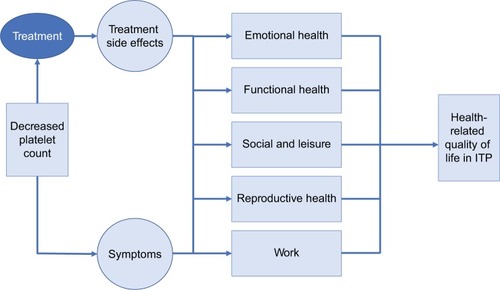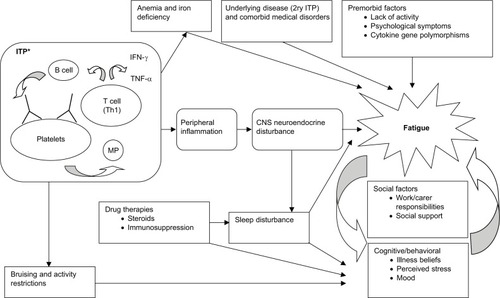Figures & data
Table 1 Studies of HRQoL in adults with ITP
Table 2 Studies of HRQoL in children with ITP
Figure 1 Conceptual model for health-related quality of life in patients with ITP.
Abbreviation: ITP, immune thrombocytopenia.

Figure 2 Model of the pathogenesis of ITP-associated fatigue.
Abbreviations: ITP, immune thrombocytopenia; 2ry, secondary; B cell, autoantibody producing B lymphocytes; T cell (Th1), T lymphocyte with a T helper 1 polarization; TNF-α, tumor necrosis factor-α; IFN-γ, interferon-γ; MP, microparticle; CNS, central nervous system.

